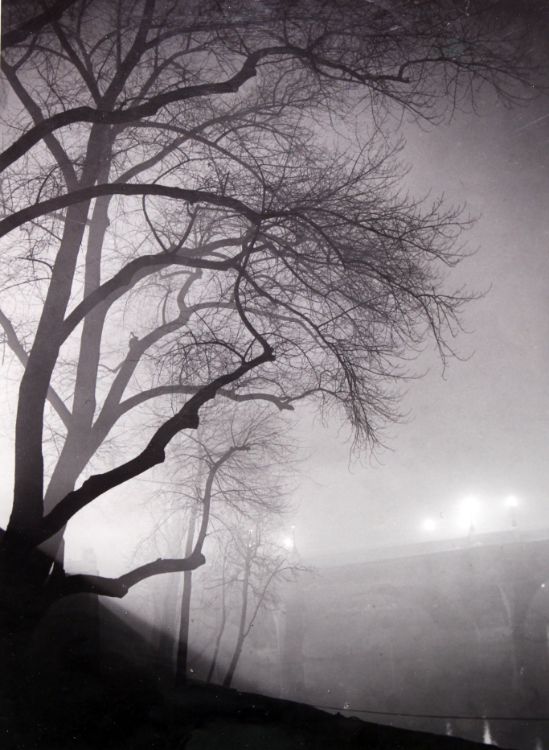Brassaï, pseudonym of Gyula Halász, was a key figure in the rich visual culture that emerged in Europe during the interwar period. Brassaï experimented with several art forms including sculpture and film-making, taking up photography in 1929. He was one of a number of Hungarian artists who emigrated to Paris in the interwar years and quickly became one of France’s most famous photographers. With his unique eye, he chronicled the streets and landmarks of the city, and was later dubbed the ‘eye of Paris’ by Henry Miller.
Brassaï remained freelance throughout his career, working for various publications including Coronet, Picture Post, Minotaure and Harper’s Bazaar. While he spent his days completing commercial assignments, at night time Brassaï would wander the streets of Paris, photographing the city’s nightlife in cafés and bars, eerie deserted streets and train stations as well as views from the city’s bridges and landmarks. Brassaï was heavily influenced by the Surrealist artists he met in the avant-garde artist circles of Paris, having been introduced by fellow Hungarian, André Kertész, and he produced a number of photographs which clearly demonstrate their influence. In his photographs of night-time Paris, though the obvious Surrealist tropes are removed, the photographs contain an intense psychology that was of such interest to Surrealist artists. Brassaï’s recognition that the extraordinary always prowls close to the ordinary informs his book of photographs Paris by Night, first published in 1933, which teems with people who exist at the twilight of respectable society. To many photographic artists, such outsiders as vagrants and prostitutes represented freedom and nonconformity. Brassaï’s Paris by Night carried no message of social reform or personal redemption, but showed such people of the night as ‘Bijou’ (jewels), who relished the extremes of life.
This photograph taken on the banks of the river Seine depicts the Pont Neuf, Paris’ oldest bridge, lit by street lamps and overcast in fog. These atmospheric conditions give the photograph an eerie quality and a hint of mystery, however, Brassaï’s intentions were to reveal another side of the famous city and to capture the beauty of the city at night. Paris would remain an important subject for Brassaï throughout his career. While many figures in the city’s art scene emigrated to America at the outbreak of the Second World War, Brassaï remained in the city. Later projects, Secret Paris, Artists of My Life and Grafitti all centred on life in Paris as it continued to fascinate him, and in 1949 he became a naturalised citizen of France
